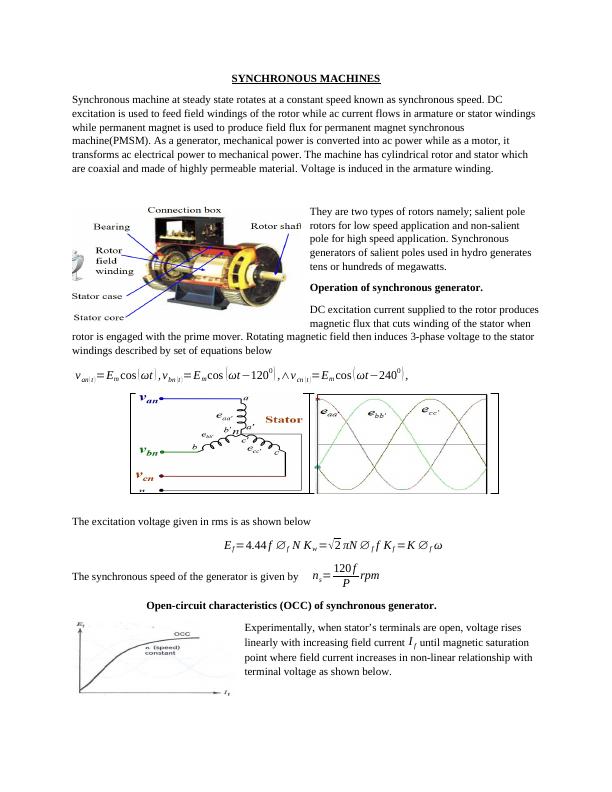Synchronous Machines - Types, Operation, Phasor Diagram, Torque and Power
Learn about FACTS Devices such as SVC and STATCOM and HVDC (high voltage DC) system
3 Pages535 Words313 Views
Added on 2022-11-18
About This Document
Synchronous machines are used as generators and motors. They have cylindrical rotor and stator made of highly permeable material. Learn about the types of rotors, operation of synchronous generator, open-circuit characteristics, equivalent circuit model, phasor diagram, torque and power, parallel operation of synchronous generators, voltage regulation characteristics of a standalone synchronous generator and synchronous condenser.
Synchronous Machines - Types, Operation, Phasor Diagram, Torque and Power
Learn about FACTS Devices such as SVC and STATCOM and HVDC (high voltage DC) system
Added on 2022-11-18
ShareRelated Documents
End of preview
Want to access all the pages? Upload your documents or become a member.
Theoretical Background Electrical Engineering
|9
|1452
|51
Power Electronics : Assignment
|3
|729
|162
Transformer and Induction Motor Tests and Analysis
|11
|927
|438
DC Motor Depth Study-Report
|10
|2241
|446
Classifications of DC Motors
|15
|1933
|121
Types and Construction of Generators
|7
|718
|109

